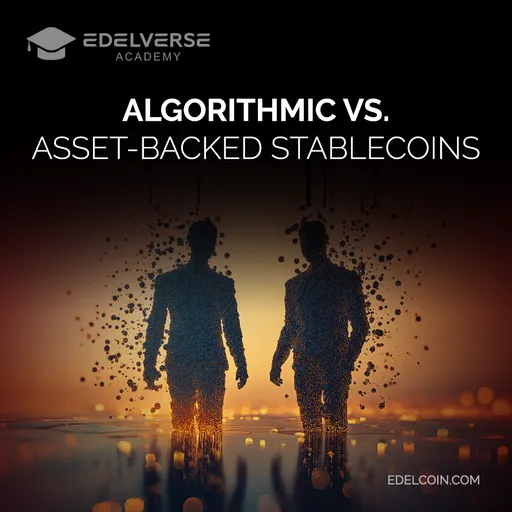Exploring the Environmental Impact of Stablecoins
Introduction
The rapid adoption of cryptocurrencies has sparked debates about their environmental impact. While traditional cryptocurrencies like Bitcoin often face criticism for their high energy consumption, stablecoins present a different narrative. Stablecoins are designed to maintain price stability and operate on various blockchain networks that influence their ecological footprint. This article explores how stablecoins, including Edelcoin, affect the environment and highlights efforts to make the crypto industry more sustainable.
Understanding Blockchain Energy Use
Blockchain networks use different mechanisms to validate transactions with varying energy requirements:
- Proof of Work (PoW): Bitcoin uses this method, which requires significant computational power and leads to high energy consumption.
- Proof of Stake (PoS): A more efficient alternative, PoS reduces energy usage by selecting validators based on their holdings rather than computational effort.
Many stablecoins, including Edelcoin, leverage Ethereum and Polygon. Both are transitioning to or already utilizing PoS models, significantly reducing their environmental impact.
Learn more about blockchain technology.
Environmental Considerations for Stablecoins
1. Energy Efficiency
The blockchain networks on which stablecoins operate significantly influence their energy consumption. PoS-based blockchains like Ethereum and Polygon are far more energy-efficient than PoW networks. Edelcoin benefits from these advancements, ensuring lower environmental impact during transactions.
2. Carbon Emissions
Stablecoins don’t emit carbon but rely on the energy sources of their supporting blockchain networks. Adoption of renewable energy within the crypto mining and validation industry is crucial for reducing carbon footprints.
3. Resource Sustainability
Asset-backed stablecoins like Edelcoin stand out by tying their value to industrial metals such as copper, cesium, and nickel. These metals are critical for modern technologies, ensuring their extraction supports industries prioritizing efficiency and innovation.
Explore Edelcoin's asset-backed model.
How Edelcoin Minimizes Environmental Impact
- Efficient Blockchain Networks
Edelcoin operates on Ethereum and Polygon, emphasizing scalability and energy efficiency through PoS mechanisms. - Transparency in Operations
Regular audits and reports ensure accountability and promote sustainable practices. - Industrial Metal Backing
By anchoring its value to high-demand metals, Edelcoin supports resource-efficient industries like electronics and renewable energy.
Learn about Edelcoin’s transparency efforts.
The Path to a Sustainable Future
As blockchain networks evolve, the crypto industry is moving toward greener practices. Initiatives like using renewable energy for mining and adopting energy-efficient consensus mechanisms are paving the way for sustainable growth. Stablecoins, with their specific use cases and operational efficiencies, are positioned to lead this transition.
Edelcoin exemplifies how stablecoins can balance innovation and sustainability, ensuring that financial progress doesn’t come at the expense of the environment.
Conclusion
While cryptocurrencies have faced criticism for their environmental impact, stablecoins like Edelcoin are driving change by leveraging energy-efficient networks and sustainable practices. With their role in decentralized finance and global payments expanding, stablecoins represent a greener alternative in the crypto landscape.

Test Your Knowledge
- What blockchain networks does Edelcoin operate on?
a. Bitcoin
b. Ethereum and Polygon
c. Solana - How does Edelcoin reduce environmental impact?
a. Operates on PoS blockchains
b. Uses PoW consensus models
c. Doesn’t use blockchain technology - What backs Edelcoin’s value?
a. Fiat currencies
b. Copper, cesium, and nickel
c. Renewable energy credits
Correct answers: 1b, 2a, 3b.
Contents






